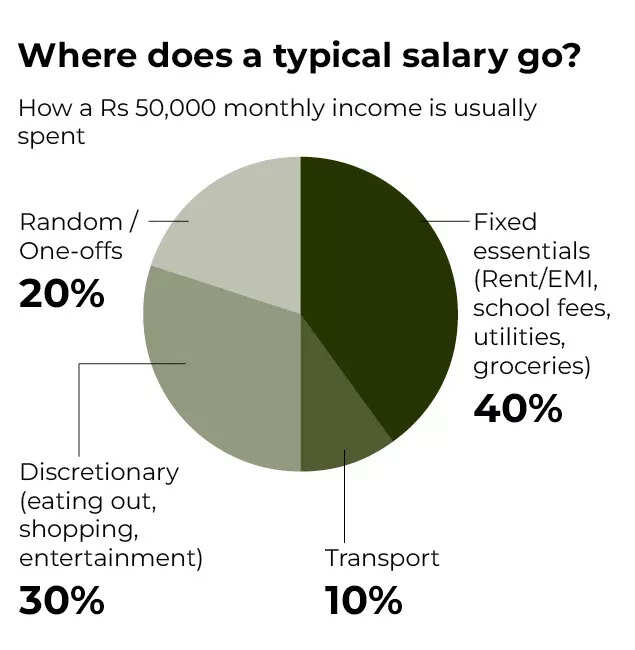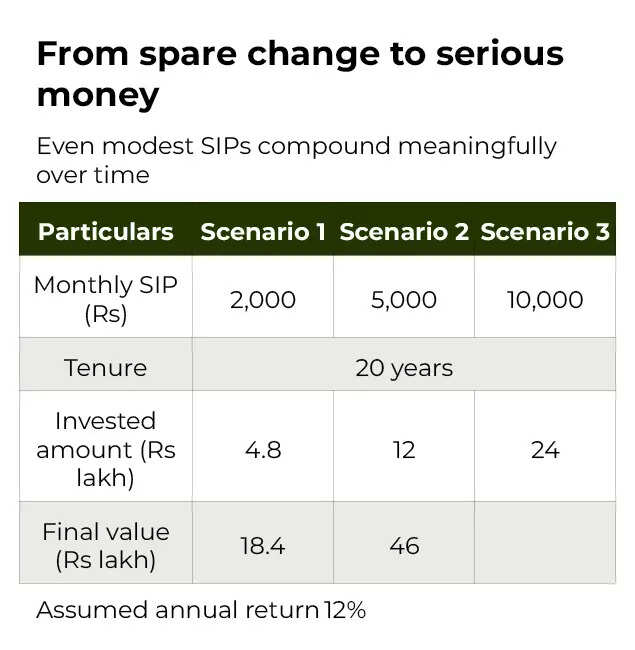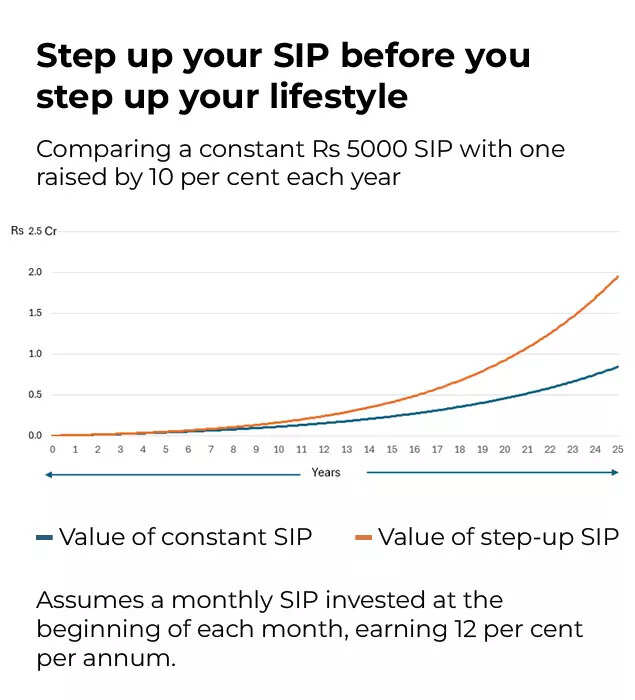Business
Will AI mean the end of call centres?

Jane WakefieldTechnology reporter
 Getty Images
Getty ImagesAsk ChatGPT whether AI will replace humans in the customer service industry, and it will offer a diplomatic answer, the summary of which is “they will work side by side”.
Humans though, are not so optimistic.
Last year, the chief executive of Indian technology firm Tata Consultancy Services, K Krithivasan, told the Financial Times that AI may soon mean that there is “minimal need” for call centres in Asia.
Meanwhile, AI will autonomously resolve 80% of common customer service issues by 2029, predicts business and technology research firm Gartner.
There is currently a lot of hype around “AI agents”. That is the term given to AI systems that can operate more autonomously and make decisions.
They could turbo-charge current non-AI chatbots, known as “rule-based chatbots”, which can only answer a set list of questions.
My own recent experience with parcel delivery firm Evri’s chatbot illustrates the existing, non-AI state of play.
My parcel had not arrived, and Ezra (the name of the chatbot), offered to “get this resolved straight away”.
It asked for a tracking reference, and after I had typed that in, it told me that my parcel had been delivered.
I could request proof of delivery, and when I did so it showed me a photo of the package… at the wrong front door. And there was no option to advance the conversation after this “evidence” was shown.
In response, Evri tells the BBC it is investing £57m to further improve the service.
“Our intelligent chat facility uses tracking data to suggest the most helpful responses and ensure the customer’s parcel is delivered as soon as possible, if this has not happened as scheduled,” it says.
“Our data confirms the vast majority of people get the answers they need from our chat facility, first time, within seconds. We’re always reviewing feedback to ensure our services are as helpful as possible, and we continue to make enhancements on a rolling basis.”
On the flipside, rival parcel delivery firm DPD had to disable its less rule-bound AI chatbot after it criticised the company and swore at users.
 Getty Images
Getty ImagesGetting the balance right between being on brand and genuinely helping customers is a tricky one for businesses to grapple with as they migrate to AI.
Some 85% of customer service leaders are exploring, piloting or deploying AI chatbots, according to Gartner. But it also found that only 20% of such projects are fully meeting expectations.
“You can have a much more natural conversation with AI,” says Garner analyst Emily Potosky.
“But the downside is the chatbot could hallucinate, it could give you out-of-date information, or tell you completely the wrong thing. For parcel delivery I would say rules-based agents are great because there are only so many permutations of questions about someone’s package.”
Resources and money are among the key reasons businesses may be considering the move from human to AI customer service. But Ms Potosky points out that it isn’t a given that AI will be cheaper than human agents.
“This is a very expensive technology,” she says.
The first thing that any business wanting to replace humans with AI will have to do is ensure that they have extensive training data.
“There’s this idea that knowledge management becomes less important because generative AI can solve the fact that their knowledge is not particularly well organised, but actually the opposite is the case,” adds Ms Potosky.
“Knowledge management is more important when deploying generative AI.”
Joe Inzerillo, chief digital officer at software giant Salesforce, tells the BBC that call centres provide fertile training grounds for AIs, particularly ones that have been moved to low-cost areas such as the Philippines and India.
This is because a lot of staff training will have been done, which the AI can also learn from.
“You have a huge amount of documentation, and that’s all really great stuff for the AI to have when it is going to take over that first line of defence,” he says.
Salesforce’s AI-powered customer service platform, AgentForce, is currently being used by a range of customers from Formula 1, to insurance firm Prudential, restaurant-booking website Open Table, and social media site Reddit.
Mr Inzerillo says that when Salesforce first put the platform through its paces it learned some valuable lessons about how to make the AI seem more human-like.
“While a human might say ‘sorry to hear that’, the agent just opened a ticket,” says Mr Inzerillo.
So the AI was trained to show more sympathy, especially when a customer has a problem.
Salesforce also found that not allowing the agent to talk about competitors proved problematic.
“This backfired when customers asked legitimate questions about integrating Microsoft Teams with Salesforce,” says Mr Inzerillo. “The agent refused to help because Microsoft appeared on our competitor list.”
The firm subsequently replaced that rigid rule.
Salesforce has ambitious plans for the continuing rollout of its AI agents, and so far it claims that they are a hit with its customers. It also says that the vast majority of customers, 94%, are choosing to interact with AI agents when given the option.
“We’ve seen customer satisfaction rates that are in excess of what people get with humans – then AI can unlock the next level of customer service,” says Mr Inzerillo.
It has also meant that the firm has cut customer service costs by $100m, but he was keen to play down recent headlines that suggest this has led to 4,000 jobs being slashed.
“A very large percentage of those people got redeployed in other areas around customer service.”
 Fiona Coleman
Fiona ColemanFiona Coleman runs QStory, a firm which is using AI to offer human call centre workers more flexibility in their shift patterns. Its customers include eBay and NatWest.
While she sees the value in AI improving working conditions, she is not sure the technology can ever replace humans entirely.
“There are times where I don’t want to have a digital engagement, and I want to speak to a human,” she says.
“Let’s see what it looks like in five years’ time – whether an AI can do a mortgage application, or talk about a debt problem. Let’s see whether the AI has got empathetic enough.”
The use of AI in customer service could, in fact, already be facing a backlash.
Legislation currently proposed in the US to move off-shore call centres back to America also requires businesses to disclose the use of AI, and transfer a caller to a human if asked to do so.
Meanwhile, Gartner predicted that by 2028 the EU may mandate what is called ‘the right to talk to a human” as part of its consumer protection rules.
Business
India’s Net Direct Tax Collection Rises 8% To Rs 17.04 Lakh Crore On Higher Corporate Tax Mop-Up

Last Updated:
Net corporate tax collection during the period (April 1, 2025, to December 17, 2025) stands at about Rs 8.17 lakh crore, up from Rs 7.39 lakh crore in the same period of FY25.
India’s gross direct tax collection, before adjusting refunds, stood at over Rs 20.01 lakh crore so far this fiscal year, a 4.16 per cent growth over the year-ago period.
India’s net direct tax collection has increased 8 per cent to over Rs 17.04 lakh crore in the ongoing financial year so far, on higher corporate tax mop-up. Net corporate tax collection during the period (April 1, 2025, to December 17, 2025) stood at about Rs 8.17 lakh crore, up from Rs 7.39 lakh crore in the same period of FY25.
Refund issuances fell 13.52 per cent to over Rs 2.97 lakh crore between April 1 and December 17.
The country’s non-corporate tax, including individuals and HUFs, mop-up so far this fiscal year stood around Rs 8.46 lakh crore, up from about Rs 7.96 lakh crore in the same period last year.
Securities Transaction Tax (STT) collection stood at Rs 40,194.77 crore so far this fiscal year, marginally higher than Rs 40,114.02 crore in the year-ago period.
India’s gross direct tax collection, before adjusting refunds, stood at over Rs 20.01 lakh crore so far this fiscal year, a 4.16 per cent growth over the year-ago period.
In the current fiscal year, the government has projected its direct tax collection at Rs 25.20 lakh crore, up 12.7 per cent year-on-year. The government aims to collect Rs 78,000 crore from STT in FY26.
Rohinton Sidhwa, partner at Deloitte India, said, “Tax refunds issuance has dropped much below last year, while overall tax collection has grown marginally at 4%. The drop in refunds is being attributed to a higher amount of screening of any fraudulent refund claims. Holding back refunds also accelerates litigation that the tax department can ill afford. Overall, the corporate advance tax increase signals good corporate earnings. Non- corporate advance tax collections have, however, declined possibly on the back of rate cuts for individuals given in the previous Budget.”
December 19, 2025, 12:49 IST
Read More
Business
Government borrowing higher than expected after winter fuel payments U-turn

Borrowing fell last month to its lowest November level for four years but was still higher than expected as figures for the year so far were pushed higher due to the Government’s U-turn on winter fuel payments.
Official figures showed borrowing stood at £11.7 billion last month, £1.9 billion less than in November last year and the lowest for that month since 2021 thanks to a sharp fall in debt interest payments.
But the figure was more than the £10.3 billion expected by most economists and the £8.6 billion forecast in March by the UK’s independent fiscal watchdog, the Office for Budget Responsibility (OBR).
The OBR’s monthly forecasts from the budget on November 26 are not available until mid-January, according to the ONS.
Borrowing for the eight months of the financial year so far was £132.3 billion, £10 billion higher than the same period a year ago and £16.8 billion higher than the OBR forecast in March.
This was partly due to an extra £1.8 billion of spending on winter fuel payments after the Government U-turned on its previous decision to severely restrict payments through means testing, instead opting to give the payout to all pensioners except those earning above £35,000 a year.
This helped drive an upward revision to borrowing for the seven months to October by £3.9 billion.
ONS senior statistician Tom Davies said: “Despite an increase in spending, this month’s borrowing was the lowest November for four years.
“The main reason for the drop from last year was increased receipts from taxes and National Insurance contributions.”
November’s figure was pushed lower thanks to falling debt interest payments on borrowing, down by £200 million year-on-year to £3.4 billion and the lowest November level for six years.
Public sector net debt, including the Bank of England, reached £2.93 trillion at the end of November, which is around 95.6% of gross domestic product (GDP) and 0.3 percentage points more than a year ago, although remains at levels last seen in the early 1960s.
Elliott Jordan-Doak, senior UK economist at Pantheon Macroeconomics, said there was “very little Christmas cheer for the Chancellor” in the latest borrowing figures.
He added: “Ms Reeves has staked much fiscal credibility on chunky tax increases in the back end of the forecast period. But we think today’s figures further illustrate the shaky foundations of that gamble.
“Revenues continue to underperform, and the smorgasbord approach of tax increases relies on distortionary tax increases with uncertain yields.
“We also have serious doubts about the Government’s ability to follow through on the raft of spending cuts announced in the Budget.”
Chief Secretary to the Treasury James Murray said the debt interest payments underscored the need to bring borrowing down.
He said: “£1 in every £10 we spend goes on debt interest – money that could otherwise be invested in public services.
“That is why last month the Chancellor set out a Budget that delivers on our pledge to cut debt and borrowing.”
Martin Beck at WPI Strategy said “confidence remains the missing ingredient”.
“A clear and credible pro-growth strategy from the Government – and an end to the pervasive gloom surrounding the UK economy – may matter just as much for the public finances as the fine print of future tax and spending plans,” he said.
Business
Ask Dhirendra: “How do I decide how much to save and invest when my income is just about enough?” – The Times of India

“How do I decide how much to save and invest when my income is just about enough?”This is one of those questions that sounds technical, but is actually very emotional.On paper, it’s simple: income comes in, expenses go out, and whatever is left is “savings. In real life, income comes in, rent, EMIs, school fees, petrol, Swiggy, Zomato, sale on Myntra, birthday gifts, one sudden expense… and at the end of the month, you look at your balance and say, “I’ll start investing from next month. Pakka.”Next month looks surprisingly similar.So let’s start with an honest admission: for most people, the problem is not which fund to choose. It’s how much they can realistically save when it feels like the money is just about enough.At Value Research, whenever we look at this, we don’t begin with a number like “you must save 30%”. We start with a different idea: savings are not what is left after spending. Savings are what you decide first; spending adjusts after that if you flip this order, the maths – and your behaviour – changes completely.A good rule of thumb for many middle-class households is to allocate 20–30% of their take-home income to savings and investments. However, I also know that for many people today, 30% sounds like a bad joke. So instead of fighting over the “ideal” number, let’s work with two simpler questions:
- What can you save today without breaking your life?
- How can you make that number grow every year?
To answer the first question, you need to know where your money is actually going, not where you think it is going. For one or two months, track your expenses honestly – not for Instagram, for yourself. You don’t need an app; even a simple notebook or spreadsheet works.

Where does a typical salary go?
Once you see your own pie chart, three things usually stand out:
- Some expenses are non-negotiable (rent, basic food, fees).
- Some are negotiable but important (a modest phone, occasional eating out).
- Some are pure leakage (unused subscriptions, impulsive orders, “I don’t even remember what this was”).
Your first “investment” might simply be plugging two or three leaks. Even if that frees up only ₹2,000–₹3,000 a month, that is your starting SIP.Now let’s look at how “small” that really is.

From spare change to serious money
When we run these numbers at Value Research in our retirement and goal calculators, the results are always the same: the gap between zero and small is far bigger than the gap between small and perfect.But what if your income truly is at the survival stage? There are people for whom even ₹2,000 is a luxury some months. If that’s your reality, you have two parallel jobs. One is to create a tiny habit – even ₹500 or ₹1,000 a month into a recurring deposit or a conservative fund. The absolute amount is less important than the mental switch from “I’ll save if anything is left” to “I will save something, and then I will live on the rest.”The second job is to make sure that as your income grows, your lifestyle doesn’t expand at the same speed. This is where a lot of middle-class Indians quietly sabotage themselves. Every salary increase automatically becomes a better phone, nicer meals out, upgraded gadgets, and bigger car loans. The percentage saved stays the same, or sometimes even falls.A very powerful habit – one we often build into plans at Value Research – is the “step-up”. Each year, when your salary goes up, you increase your SIPs and savings before you upgrade anything else.

Step up your SIP before you step up your lifestyle
In many examples we’ve run, the step-up strategy leads to a dramatically higher corpus at the end, without you ever feeling an acute “sacrifice” in any single year. You just avoid letting every pay hike leak out into lifestyle.Now, how do you decide your own number?Here’s a simple approach:
- First, add up your genuine essentials: rent/EMI, groceries, utilities, fees, basic transport.
- Next, be realistic and add a modest amount for discretionary spending that you know you’ll do anyway – because you are human, not a robot.
- See what is left. From that leftover, commit to a percentage – even 10% of your take-home income – as a non-negotiable
saving and investing amount. Set up automatic transfers and SIPs for that right after your salary date.
If that number feels tight, start a little lower and promise yourself one thing: every time your income goes up, your savings rate will go up faster than your spending.At Value Research, when we build long-term plans, we don’t assume people will suddenly start saving 40% from next month. We assume they will start somewhere realistic, and then we design step-ups. The rigour is in the process, not in some magical starting number.One last point. Many people postpone investing because they are embarrassed by how small their starting amount looks. Please don’t underestimate the psychological power of seeing a small, growing pile that you started and maintained. It changes how you think about yourself: from “I can’t save” to “I am someone who always saves something.” That identity is worth more than one extra dinner out.So how much should you save and invest when your income feels just about enough? The honest answer is: start with whatever you can without lying to yourself, protect that amount like you protect your rent, and then make sure it rises every time your income increases. The “right” number is not what a formula says; it’s the number you will actually stick to for the next 20 years.The perfect percentage can wait. The first rupee cannot.If you have any queries for Dhirendra Kumar you can drop us an email at: toi.business@timesinternet.in(Dhirendra Kumar is Founder and CEO of Value Research)
-

 Business6 days ago
Business6 days agoHitting The ‘High Notes’ In Ties: Nepal Set To Lift Ban On Indian Bills Above ₹100
-

 Politics1 week ago
Politics1 week agoTrump launches gold card programme for expedited visas with a $1m price tag
-

 Business1 week ago
Business1 week agoRivian turns to AI, autonomy to woo investors as EV sales stall
-

 Fashion1 week ago
Fashion1 week agoTommy Hilfiger appoints Sergio Pérez as global menswear ambassador
-

 Sports1 week ago
Sports1 week agoPolice detain Michigan head football coach Sherrone Moore after firing, salacious details emerge: report
-

 Business1 week ago
Business1 week agoCoca-Cola taps COO Henrique Braun to replace James Quincey as CEO in 2026
-

 Sports1 week ago
Sports1 week agoU.S. House passes bill to combat stadium drones
-

 Tech1 week ago
Tech1 week agoGoogle DeepMind partners with UK government to deliver AI | Computer Weekly







